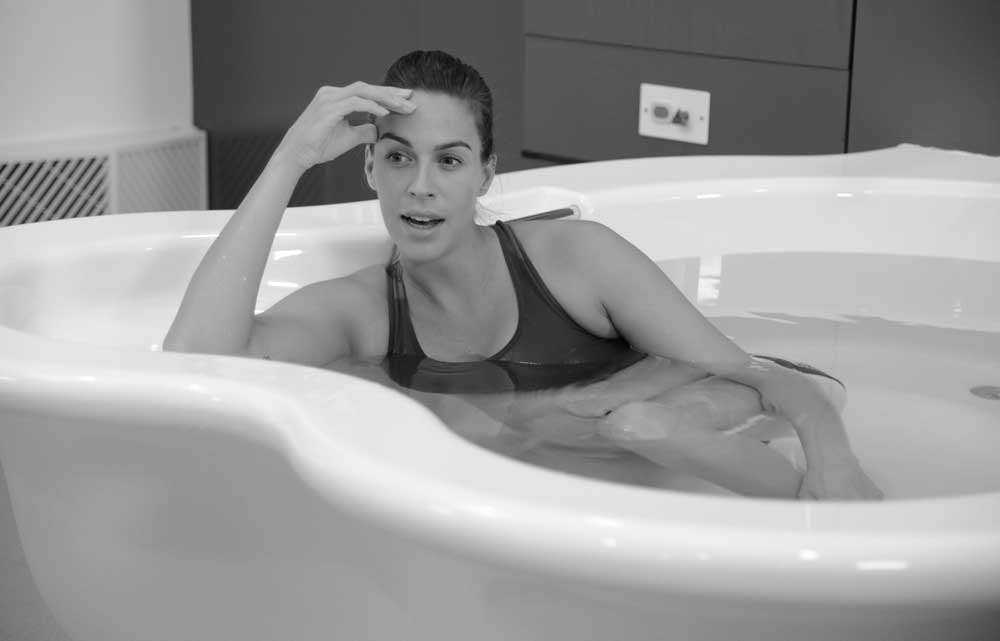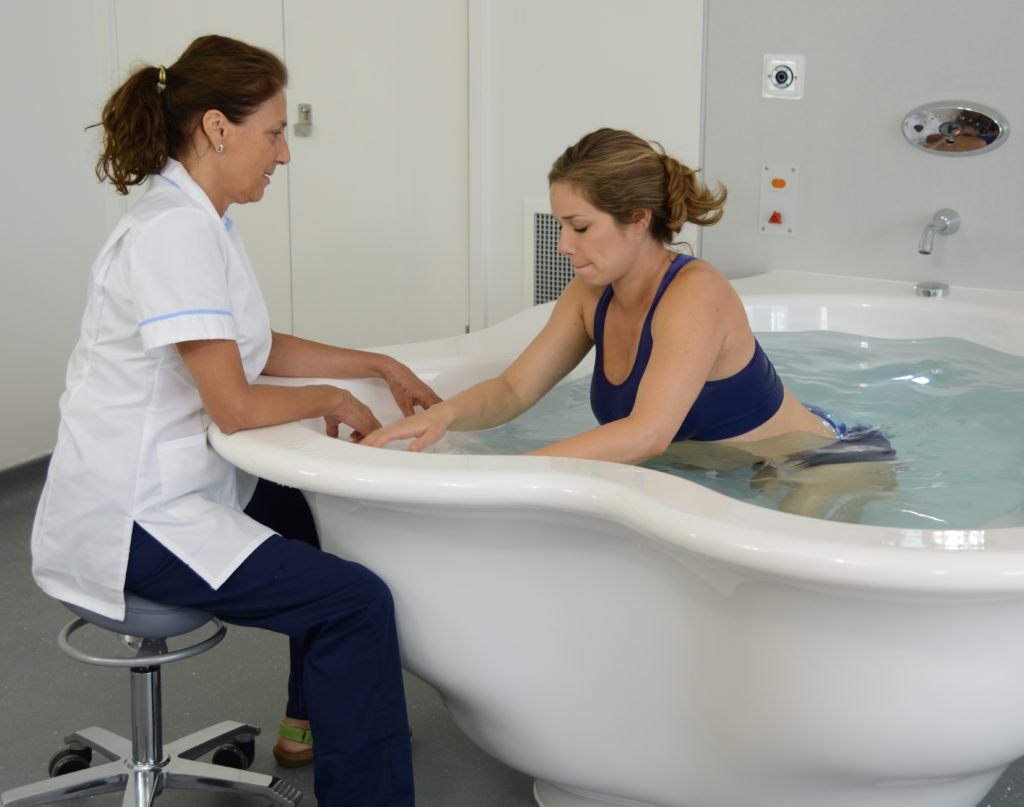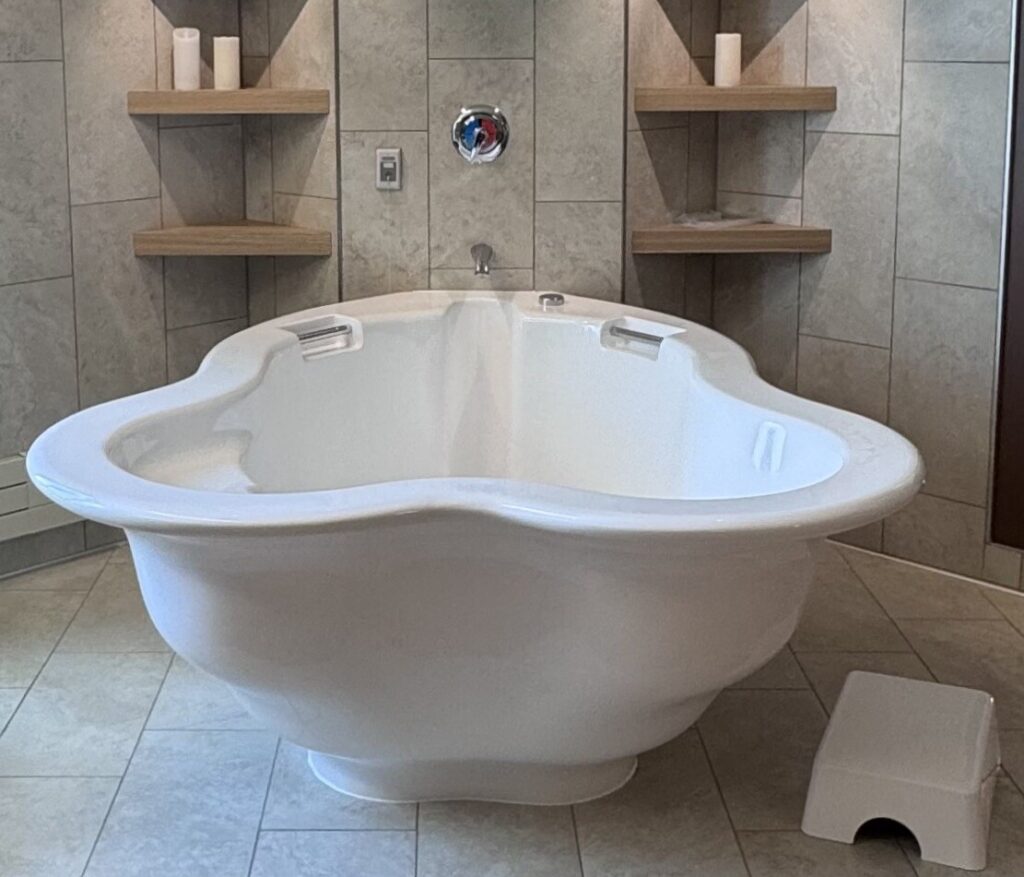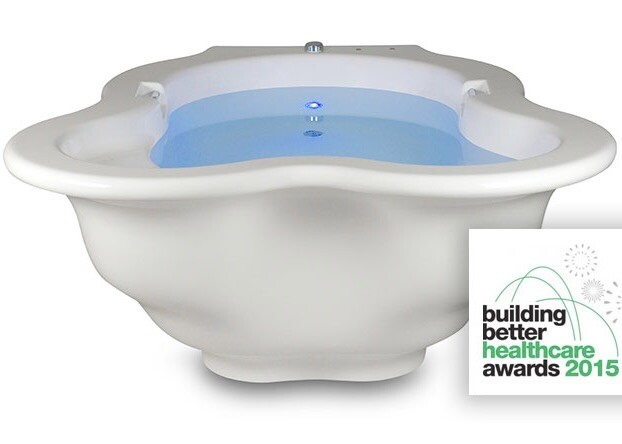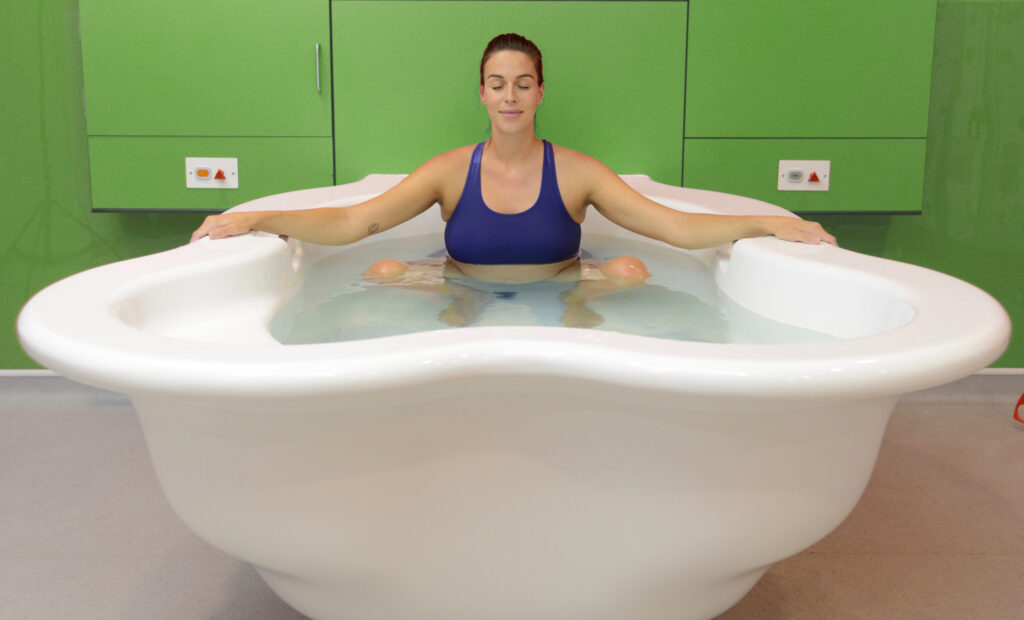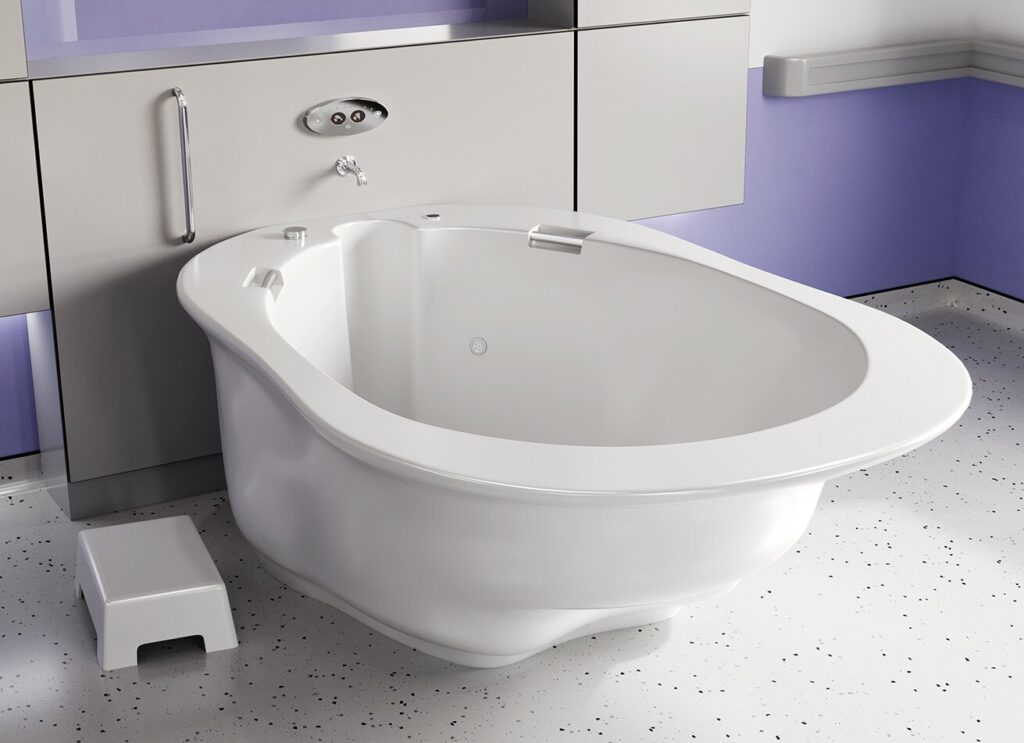Original Research
Victoria Bates , Jennifer Crane, Maria Fannin
British Medical Journal
June 2023
Abstract
Birthing pools are a common feature of maternity units across Europe and North America, and in home birth practice.
Despite their prevalence and popularity water birth pools have received minimal empirical or theoretical analysis.
This article attends to the emergence, design and meaning of such birthing pools, with a focus on the UK in the 1980s and 1990s.
Across spheres of media, political and everyday debate, the pools characterise the paradoxes of ‘modern maternity’: they are ‘fluidly’ timeless and new, natural and medical, homely and unusual, safe and risky.
Beyond exploring the contradictions of ‘modern maternity’, we also make two key interventions.
First, we contend that modern maternity has substantially expanded in recent decades to hold and include additional ideas about comfort and experience.
Second, we flag the culturally specific notions of ‘modernity’ at play in modern births: the popularity of the birthing pool was typically among white, middle-class women.
We argue that birthing pools have had an impact at a critical moment in birthing people’s care, and we map out the uneven and unjust terrains through which they have assumed cultural and medical prominence.
I am pleased to say that I (Keith Brainin) receive honourable mention in this esteemed publication and recommend it highly to anyone interested in the use of water for labour.
The history of water birth and development of specialised water birth pools



